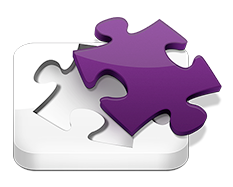Companies receive thousands of inputs from their customers every single day. They come from dozens of sources, including social media, the service desk, the sales team, customer advisory boards, and formal qualitative and quantitative research. Companies are not lacking customer insights. If anything, they are overwhelmed with data. Despite these efforts, most companies do not fully understand their customers’ needs.

Why does it matter? Take a look at the organization. The marketing team needs to know the customer’s needs in order to define the company’s value proposition, segment markets, position products and services, and create marketing communications. The development team must know the customer’s needs so it can understand the strengths and weaknesses of the company’s products, decide what new features to add to existing products and what new products to create. The R&D department makes technology investments based on its understanding of customer needs. Finally, the sales team’s success depends on its ability to show customers that the company’s products meet their needs.
Company success depends on understanding the customer’s needs. And yet, amazing as it sounds, while company managers agree they must satisfy customer needs, there is no common understanding of what those needs are—and more alarming, rarely is there agreement on what a customer “need” even is. Consequently, managers search through the information they have in hopes of discovering the nuggets of information that will lead them to success. Unfortunately, it is nearly impossible to discover those nuggets when the statements they are looking for have yet to be defined. That’s a dire situation: trying to satisfy customers’ needs without a clear definition of what a need is. It is like trying to solve a word puzzle without knowing what a “word” is.
To overcome these issues, we apply jobs-to-be-done theory. First, we define a market as a group of people and the “job” they are trying to get done. Dental hygienists (a group of people) who clean teeth (the job-to-be-done) and “parents who pass on life lessons to their children” constitute markets. Next, we define a customer need as “a statement that tells the organization how customers measure value as they try to get a job done”. If you know how the customer measures value, you can create a product or service that will provide it—and you can do so in a measured, controlled way.
Because we build customer need statements around the job the customers are doing rather than a product or service they’re using, they’re stable for many years. While products and services related to listening to music (for example) evolve and change, the job-to-be-done (listening to music) stays stable throughout. Consequently, defining customer needs around the “job” makes these statements beneficial for long-term planning.
Because we include a measure of value (a metric) in these customer need statements, it’s possible to see how various solutions compare in their ability to address them. It is also possible to have customers prioritize them so the organization can determine which ones are most important and unmet. These insights provide strategic direction to marketing, development, and R&D. To make sure these need statements can be prioritized without introducing error into the process, we ensure that they follow a strict, unvarying syntactical pattern, with no unnecessary words or phrases.
We call customer needs, formulated in the manner described above, “desired outcomes.” Desired outcomes are the critical input into Strategyn’s Outcome-Driven Innovation process. Examples of desired outcomes while doing the job of listening to music include “minimize the time it takes to get the songs in the desired order for listening” and “minimize the likelihood that a song sounds distorted.” For any given job-to-be-done, we often uncover between 50 and 150 desired outcomes. The key to a successful market or product strategy is knowledge of all the desired outcomes associated with a job-to-be-done, along with which segments of customers feel under- or overserved when it comes to those outcomes.
What impact does employing desired outcomes statements have? Let’s say that out of 100 desired outcomes, you discover 15 that are unmet. What are the chances that your company would have randomly developed a product or service that addressed those 15 unmet outcomes if it hadn’t known what those outcomes were? Pretty slim! But once everybody in the organization knows precisely what those 15 unmet outcomes are, all company resources can be aligned to address them—resulting in the systematic and predictable creation of customer value.



